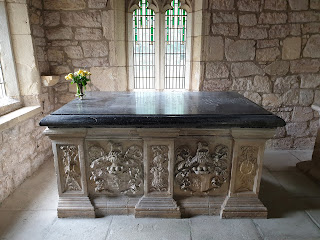London, Part Three: Museums

Regular readers (hello both of you), will hopefully already be familiar with my posts on The National Army Museum , The Museum of London and The Wallace Collection . This post will look at what, Civil War wise, is on display at The British Museum and the V&A. The British Museum is one of the world's great treasure houses, for those of us with an interest in the Civil War make for Gallery 46. Easy to spot, you'll pretty much have it to yourself as everyone else will be swarming around the mummies and the Sutton Hoo displays. Newark Siege Coin The highlight, for myself at least, are the examples of siege coins and tokens. There are some nice terracotta busts of Charles and Cromwell. Most of the gallery is devoted to crockery and glassware from the period, particularly striking is a commemorative plate of General Monck. There is also the obligatory death mask of Oliver Cromwell: their mask is bright red, whereas all the other masks...





